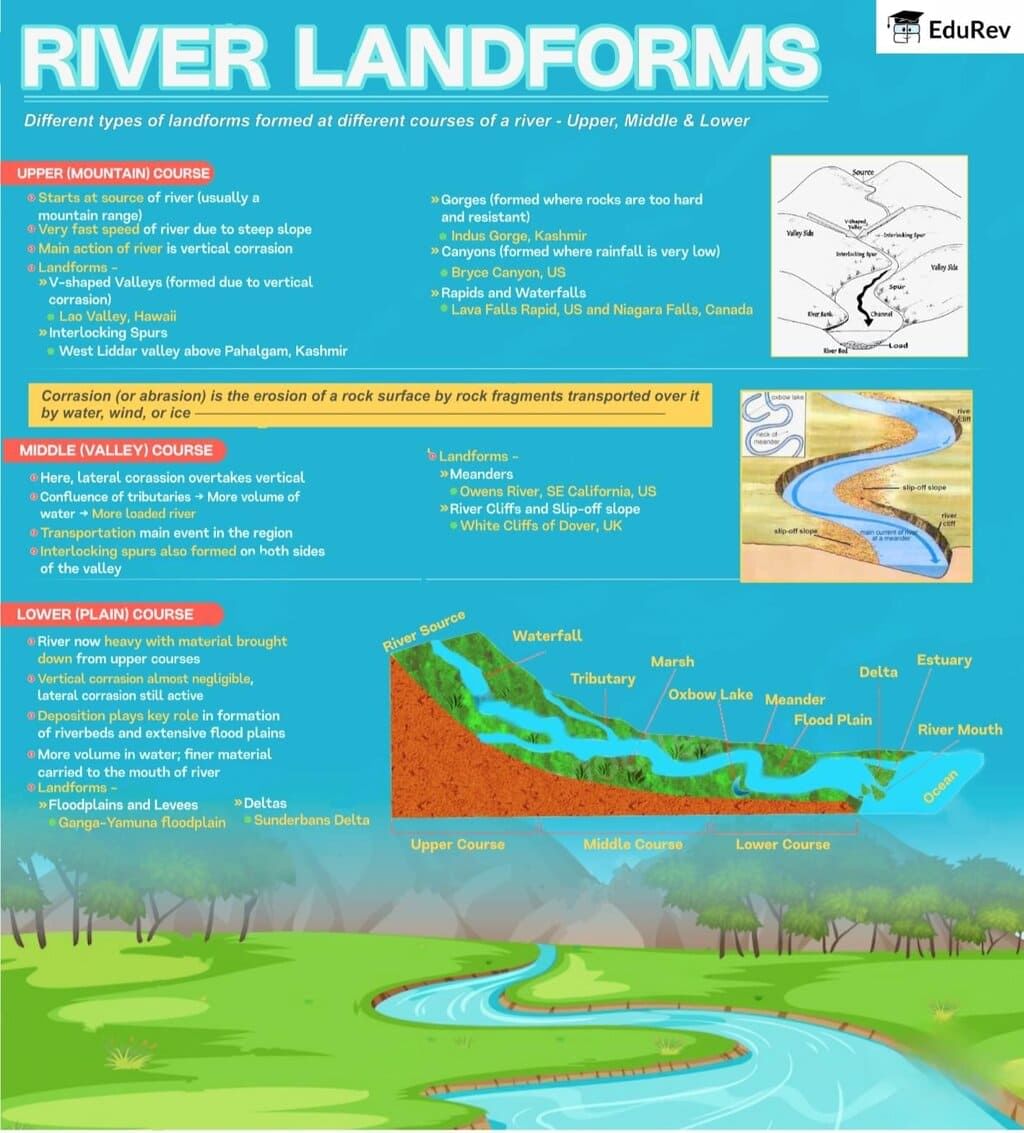UPSC Exam > UPSC Notes > Geography for UPSC CSE > Infographic: River Landforms
Infographic: River Landforms | Geography for UPSC CSE PDF Download

The document Infographic: River Landforms | Geography for UPSC CSE is a part of the UPSC Course Geography for UPSC CSE.
All you need of UPSC at this link: UPSC
|
264 videos|875 docs|232 tests
|
FAQs on Infographic: River Landforms - Geography for UPSC CSE
| 1. What are the primary landforms created by river erosion and deposition? |  |
Ans. The primary landforms created by river erosion include V-shaped valleys, gorges, and waterfalls, while deposition leads to the formation of features such as floodplains, deltas, and alluvial fans. Erosion occurs when the river's current wears away rock and soil, shaping the landscape, while deposition happens when sediment carried by the river settles as the water slows down or enters larger bodies of water.
| 2. How do meanders and oxbow lakes form in river systems? |  |
Ans. Meanders are formed when a river flows over a gentle slope, creating curves as it erodes the outer banks and deposits sediment on the inner banks. Over time, these curves can become exaggerated. An oxbow lake forms when a meander becomes so pronounced that it creates a separate body of water, cutting off the river's original path. This process highlights the dynamic nature of river systems and their ability to reshape the landscape.
| 3. What role do tributaries play in the formation of river landforms? |  |
Ans. Tributaries contribute to the overall drainage network of a river, increasing water flow and sediment load. As tributaries join the main river, they can influence erosion and deposition patterns. The interaction between tributaries and the main river can lead to the formation of various landforms, such as river valleys and deltas, by enhancing the river's ability to carve through the landscape and deposit materials in new areas.
| 4. Can you explain the concept of river terraces and how they are formed? |  |
Ans. River terraces are flat areas that rise above the current level of a river, formed during periods of downcutting or when a river erodes its bed. When a river cuts into its valley floor, it can leave behind remnants of the former floodplain at higher elevations. These terraces indicate changes in the river's flow and sediment load over time, often reflecting past climatic conditions and geological activity.
| 5. What is the significance of delta formation in river systems? |  |
Ans. Delta formation is significant as it represents a critical transition zone where a river meets a standing body of water, such as a lake or ocean. Deltas are characterized by rich sediment deposits that create fertile land, supporting diverse ecosystems and agriculture. They are also crucial for human settlements and economic activities, providing habitats, resources, and protection from flooding. Additionally, deltas serve as indicators of environmental changes and sediment dynamics within river systems.
Related Searches
















